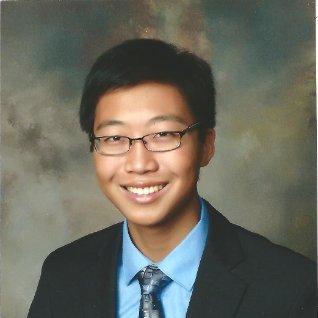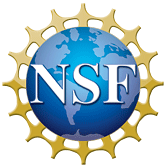People
-

Douglas Hill
Project Leader, TEC Center
My name is Douglas Hill, and I manage the TEC Center. My mission is to “Save the world one
stepcomponent at a time, and in the process train the next generation of scientists and engineers”. The TEC Center is a multidisciplinary learn-by-doing environment where we tackle real world problems. We do this first through the development of MEC components, then by combining these components for the rapid develop of instruments (see projects). I graduated from the University of California, Irvine with a B.S. in Electrical Engineering, in June 1979. My first job was with Texas Instruments, where I was given the honor of being the only junior engineer awarded ‘key contributor’. I started my own system design house, Advanced Electronic Packaging Corp., solving electronic packaging problems for major corporations across the United States for over 20 years. I’m currently a bioengineering graduate student at the University of California, Riverside. I came back to school to implement methods I had developed in electronics, to do early disease detection. Unlike electronics, I found bioengineering lacked a standardized tool set from which to work from. So the MEC system was born. The development of this multidisciplinary tool set is a daunting task, so I brought in interns from all areas of engineering, and the TEC Center was born. The students lacked many of the skills necessary to attack these real world problems, so training became an integral part of our program. The “E” stands for Evolutionary, and the Center, its people and tools keep evolving in amazing ways. I invite you to come to the center, see for yourself, and possible share in our adventure.Read more about Doug’s story and the formation of the TEC Center
-

Adam Veres
Undergraduate Researcher, TEC Center
My name is Adam, and I am a Senior Computer Science Major at University of California, Riverside. My work in the lab is to develop software to create and control MEC devices. This entails programming and/or debugging AVR for major MEC components, programming python interface for MEC components, and teaching others how to use this software. As such, I have created appropriate tutorials for programming these different devices. During the 2016-2017 school year, I would like to assist in integrating GUI with MEC software, develop AVR components for outreach or TEC as needed, and assemble computers for TEC.
-

Allen Dalisay
Undergraduate Researcher, TEC Center
My name is Allen, and I am a fourth year Bioengineering Undergraduate at University of California, Riverside. Leveraging mechanical and electrical engineering concepts for biomedical applications is a deep passion of mine. Starting with my 3D Printed Voice Controlled Prosthetic Arm project during my sophomore year, I have participated in projects that apply to my interests in biomedical devices, biomechanics, and mechatronics. After working in industry for a bit, I see myself working more on the patient end of bioengineering as a Certified Prosthetist Orthotist (CPO) after getting a Master's in Prosthetics and Orthotics (MPO). The idea of working in a field that inspires me intellectually while also being able to help others is what drives me to continue my studies and work hard at my craft.
In addition to taking mechanical engineering courses outside of the bioengineering curriculum, such as linear systems and controls and robotics, I have strengthened my engineering skills thanks to the TEC Center. My current project allows me to practice my SolidWorks skills to create the main machinery of the system, and I have developed some electrical engineering skills in which I have employed microcontrollers using the I2C protocol to run the electrical components. Furthermore, in order to communicate my project clearly to other engineers, I have created schematics in Visio that outline the electrical and pneumatic portions of the system.
My current project is with the analytical Bioreactor with 'plug-and-play' functionality. The idea of this project is to implement different modules with distinct functions such as a heating system, temperature sensor, optical density sensor, gas pumps, etc., and the sum of all the parts will result in the final Bioreactor. However, the purpose of these modules does not end with the Bioreactor! These modules can be used to create numerous different devices by combining different modules in different arrangements. With inspiration of Legos in mind, this Bioreactor and its modules can be used for analytical, research, and production purposes.
-

Hayden Karich
Undergraduate Researcher, TEC Center
My name is Hayden Karich and I am a fourth year mechanical engineering major. The TEC center has taught me how to be an effective design engineer and has improved my knowledge of manufacturing. My projects have allowed me to apply my fluid mechanics, mechatronics, heat transfer, and mechanical design knowledge that I acquired in school to real world engineering problems. Seeing how I can apply my education to components that I design was critical to the solidification of my love of engineering and my general knowledge. Designing for manufacturing is also a crucial step that some engineers sometimes miss. My projects here improved my understanding of how things are manufactured and how design features can make manufacturing possible. I came to work here to learn how to design and through the evolution of my engineering goals, I ended up learning CNC milling, 3D printing, some Arduino and Python programming, and Finite Element Simulations.
-

Krishna Addanki
Undergraduate Researcher, TEC Center
My name is Krishna Addanki, and I am a senior Electrical Engineering major at University of California, Riverside. I am interested in working on creating a basic system that allows for hardware integration with the main computer or master device. Currently, I am working on a software I2C to integrate an external I2C device. Utilizing an ATtiny84 to control an accelerometer, the lab would be able to use a customized I2C interface for most of the lab devices. Microcontrollers connected to this interface allows for premade I2C device additions when needed. During the 2016-2017 school year, I would like to be able to finish working on software I2C creation as well as begin on a system etching in-house PCB through either manual etching (using Eagle and Printed PCB) or computer guided etching (using laser printer).
-

Manoel Tamraz
Undergraduate Researcher, TEC Center
My name is Manoel, and I am a third year Bioengineering major at University of California, Riverside. I joined this lab as wanted to know if I can meet expectations in a working environment and if I can exceed those expectations through technical and working skills learned from lab. I am interested to find out if I can handle responsibilities placed upon me. Furthermore, I want to have more valuable experience that I can show on a resume which will help me in the future as I search for jobs within my field. My project objective in lab is to create a working track system and all related components, create a lift system to keep the system running in a loop, and develop a system whereby I can use black and white balls to send a binary message down the track and trigger a response. I will meet these objectives by learning Solidworks, Visio, and any other required skills. Furthermore In my lab work during the 2016-2017 academic year, I will utilize this base knowledge to streamline the solenoids used for the bioreactor which previously held a 95% success rate.
-

Matthew Smith
Undergraduate Researcher, TEC Center
My name is Matthew Smith, and I am a fourth year Mechanical Engineering major in University of California, Riverside. My goal in this lab is to further increase my understanding and ability in Solidworks. Furthermore, I would like to learn how to 3D print and be able to design a product fully through Solidworks into the 3D product. My work in the lab involves developing a flipping mechanism involving Muscle wire to swap the marble ball between the two connected tracks.
-

Raymond Iu
Undergraduate Researcher, TEC Center
My name is Raymond, and I am a fourth year Bioengineering major at the University of California, Riverside. When I entered the lab in the Fall quarter of Sophomore year, I had no vision of what engineers did, nor did I have any technical skills. Nevertheless, my role in the lab started with Microsoft Visio diagramming of systems of which I wrote a HowTo lab guide on the subject. My background in technical writing came in handy to organize and write grant applications for three of our students (him and two others), and all three students won Sophomore STEM Success grants. Summertime was spent furthering my writing skills by improving the TEC center website. This meant soliciting testimonials from past and current students in the Center, to learning the Python web framework Jekyll and how to host sites on Github.
My current project is a collaboration with Hayden Karich to improve the quality control (QC) of his muscle wire valves. I began by learning how to build the part while writing a QC document with all the information needed to create a proper valve. This is where I learned to use all the machine tools and processes in fabrication in addition to proper 3D printing procedures. This project also provided me the opportunity to learn Solidworks design software to create a pressure tube end cap. This project pipeline will have me presenting a poster on this work in Spring 2017! This lab experience functions much more like an industry experience than a lab. I enjoy this type of free-form research as it allows me to get creative and innovative while contributing to the lab. I learn something new daily, testing my abilities to the extreme that I could never learn from class settings. This lab has been my number one experience discussed during interviews as a result. I look forward to the potential of this lab and its ambitious undergraduates, Doug, and Dr. Grover to change this humble world we live at. -

Ryan Milton
Undergraduate Researcher, TEC Center
My name is Ryan, and I am a fourth Year Bioengineering major. I want to learn how to utilize Bioengineering design software in order to learn how to design and build complex systems from sets of components. I began with a solidworks project in the lab. Currently, I am working on Eagle PCB design to create an Eagle board to gain knowledge of circuitry and schematics.
-

William Grover
Assistant Professor, Department of Bioengineering
Dr. Grover is an Assistant Professor in the Department of Bioengineering at the University of California, Riverside. Prior to joining UCR, Dr. Grover received his postdoctoral training in the Biological Engineering Division at Massachusetts Institute of Technology. In Prof. Scott Manalis’ group at MIT, Dr. Grover used the group’s microfluidic mass sensors to make the first precision measurements of the density of single living cells. Dr. Grover obtained his Ph.D. in Chemistry at the University of California, Berkeley. In Prof. Richard Mathies’ group at UC Berkeley, Dr. Grover developed microfluidic “processors” that bridged the chemical, biological, and computational sciences. A native of Tennessee, Dr. Grover received his B.S. in Chemistry at the University of Tennessee, Knoxville.
Thanks to the supporters of the TEC Center!
-

The Center for Bioengineering Research at the University of California, Riverside
Development of the MEC system was supported by Prof. Jerome Schultz and the Center for Bioengineering Research at the University of California, Riverside.
-

The National Science Foundation
Development of the MEC system was supported by the Instrument Development for Biological Research (IDBR) program of the National Science Foundation under award DBI-1353974.
-

Sophomore STEM Success Awards from the Office of Undergraduate Education at the University of California, Riverside
Three of our students— undergrads Raymond Iu (Bioengineering), Hayden Karich (Mechanical Engineering), and Manoel Tamraz (Bioengineering)—received the Sophomore STEM Success Award from the Office of Undergraduate Education at the University of California, Riverside.
-

Best Buy Foundation
Thank you to the Best Buy Foundation for supporting the TEC Center!